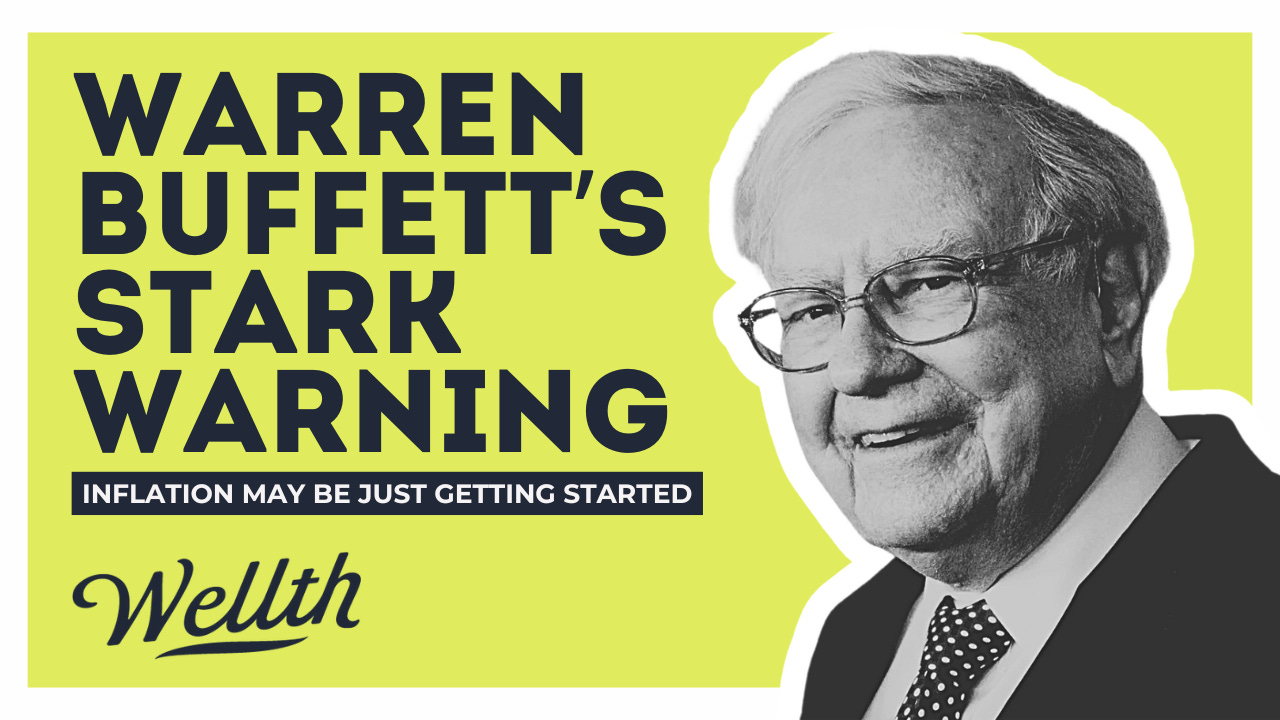Warren Buffett’s Stark Warning: Inflation May Be Just Getting Started
Why deficits matter, why inflation isn’t dead, and where investors can still protect their capital.
At Berkshire Hathaway’s 2025 annual meeting, Warren Buffett said something that should stop every investor in their tracks:
“If something cannot go on forever, it will end.”
That’s classic Buffett — deceptively simple, undeniably true, and easy to ignore when markets are calm.
He was talking about the U.S. fiscal deficit. A deficit that, at 7% of GDP, is more than double what most economists consider sustainable. And it’s not a temporary spike — it’s structural. Built into our budget. And getting worse with each passing year.
Buffett’s concern wasn’t about next quarter or next year. It was about trajectory. He warned that the longer we keep going down this path, the more likely it ends in a way we don’t expect — or can’t control.
“We are doing something that is unsustainable,” he added, “and it has the aspect to it that it gets uncontrollable at a certain point.”
The message was clear: something needs to change. And if it doesn’t, inflation — or worse, a loss of confidence in the U.S. dollar — becomes not just a possibility, but a probability.
So how do you protect your portfolio when even Warren Buffett is sounding the alarm?
The answer lies in building resilience — and in the final section of this article, we’ll show you how. But first, let’s understand why this moment matters more than most investors realize.
This Is How Civilizations Stumble
Buffett reminded investors of a lesson often forgotten in bull markets: no civilization is immune to fiscal gravity.
“The problem of how you control revenue and expenses in government is one that is never fully solved and has hurt many civilizations,” he said. “And we are not immune to it.”
That wasn’t just a throwaway line. It was a warning backed by history.
The Roman Empire didn’t collapse because it stopped building roads. It collapsed under the weight of uncontrolled spending and a steady debasement of its currency. More recently, countries like Argentina and Venezuela followed similar paths — funding deficits through devaluation, until their currencies lost credibility altogether.
The U.S. isn’t Argentina. But we’re not invincible, either. When deficits are normalized and debt is monetized, the math becomes inescapable. The longer the spending continues, the greater the temptation to inflate it away.
History shows how that ends. Buffett simply reminded us we’re not exempt.
Inflation Doesn’t Build — It Snaps
Here’s what most investors miss: inflation isn’t a slow-moving threat. It doesn’t creep in like a rising tide. It strikes like a fault line — long dormant, then suddenly catastrophic.
Buffett’s concern wasn’t just that deficits are growing. It’s that they’re becoming unmanageable.
In the late 1970s, inflation surged into double digits almost overnight. It took Paul Volcker’s dramatic interest rate hikes — and deep recession — to restore confidence in the U.S. dollar. “We came close,” Buffett recalled of that period. The implication today is clear: we may not be so lucky next time.
And with today’s debt levels, it’s unclear whether our policymakers even have the tools — or political will — to do what Volcker did.
That’s the real risk. Not inflation itself, but inflation without a credible plan to stop it.
Protecting Capital in a Debased-Currency World
So where does that leave investors?
Buffett offered a subtle but powerful clue:
“We do not want to hold any currency that we believe will depreciate.”
That’s not just a view on forex markets — it’s a philosophy of capital protection.
When the value of money is at risk, certain assets rise in importance. Not because they’re flashy or speculative, but because they hold real-world value regardless of what happens to the dollar.
What survives in that kind of world?
High-quality companies with pricing power — businesses that can raise prices without losing customers.
Commodity producers and natural resource stocks — which often benefit directly from inflationary pressures.
Real estate and infrastructure — physical assets that tend to appreciate in nominal terms when currencies weaken.
Precious metals like gold — not for income, but for preserving long-term purchasing power.
Buffett doesn’t try to time inflation. He builds portfolios that endure it. Investors would be wise to follow suit — not by chasing forecasts, but by positioning their capital to survive multiple outcomes.
The Bottom Line: If It Can’t Go On, It Won’t
Buffett’s comments at the annual meeting weren’t about short-term volatility. They were about structural reality.
A 7% deficit. A dollar slowly losing its status as unquestioned reserve. Inflation not as a one-off event, but as the eventual consequence of ignoring basic math.
These aren’t predictions. They’re warnings.
You don’t have to know exactly when the breaking point comes. You just have to admit it’s coming — and build your portfolio like it is.
Because if something can’t go on forever… it won’t.
Disclaimer: This analysis is for informational purposes only and does not constitute financial advice. Investors should conduct their own due diligence and consult with a financial advisor before making investment decisions.


